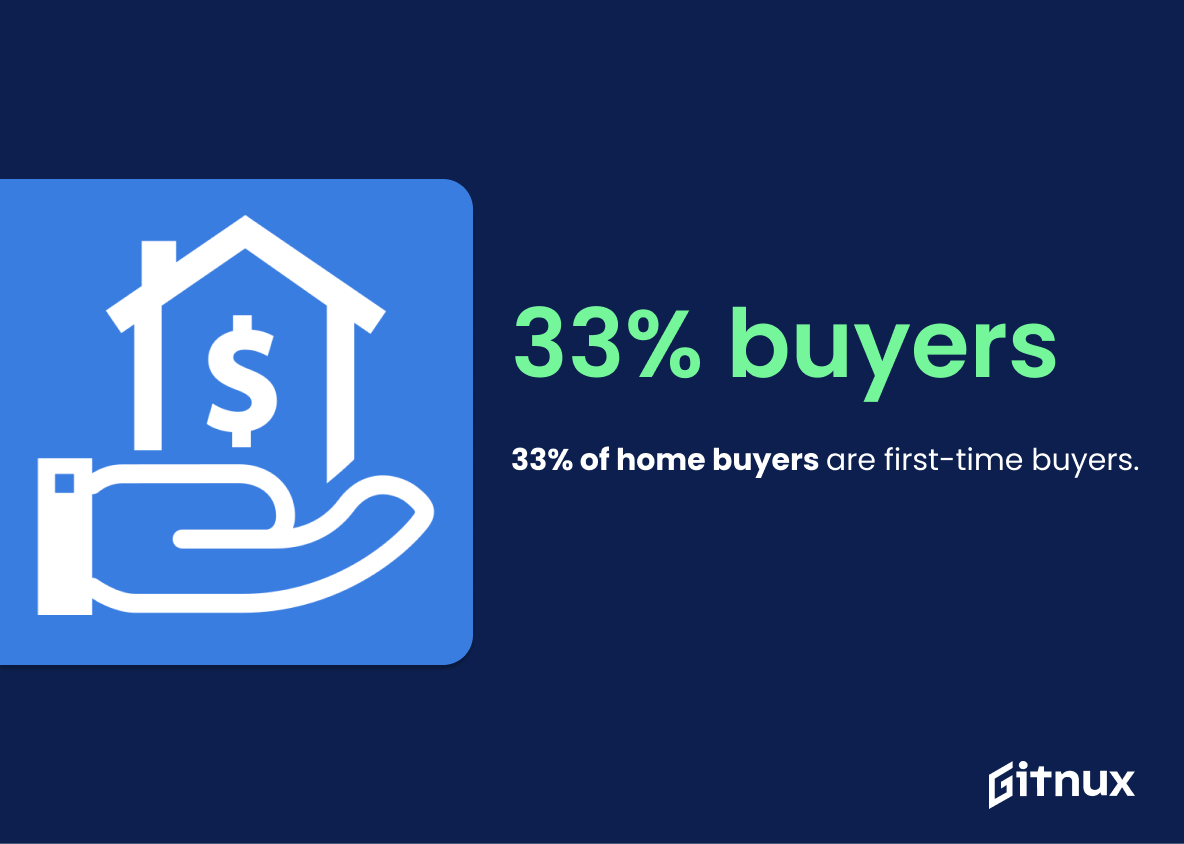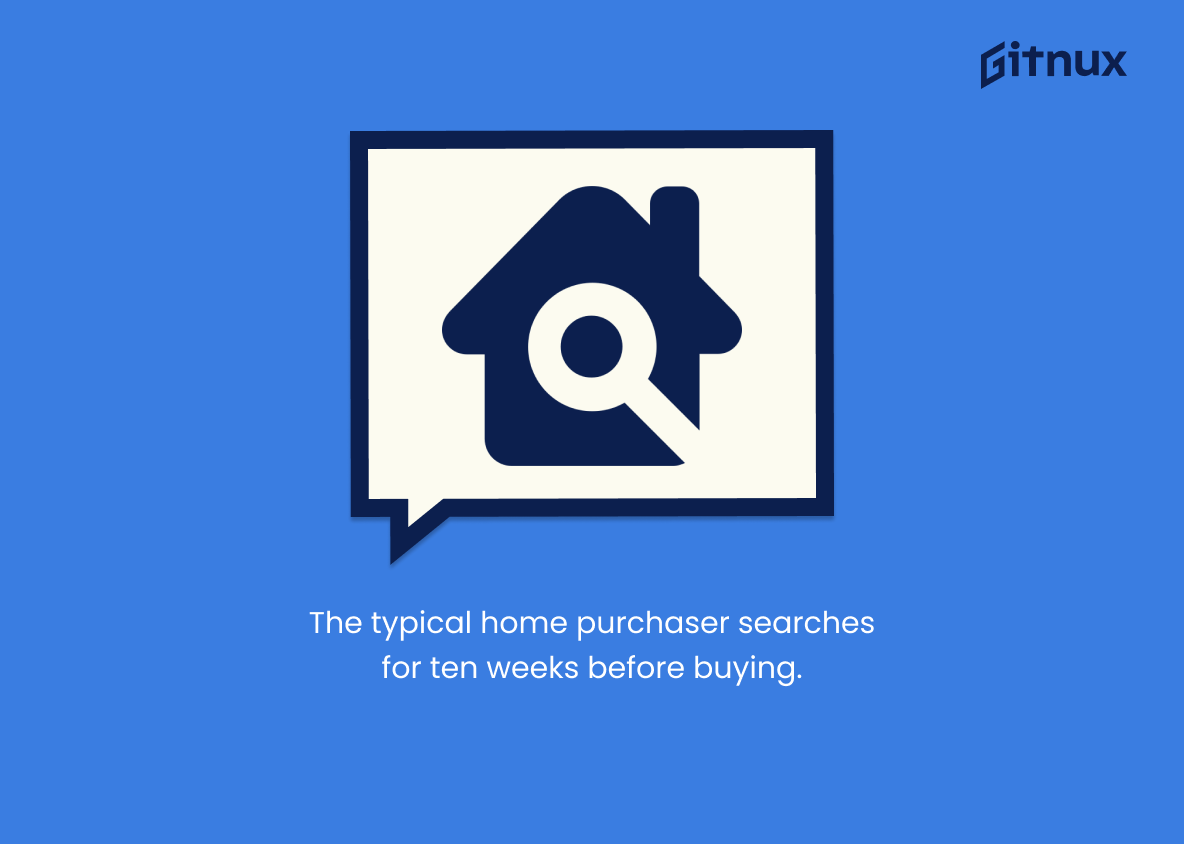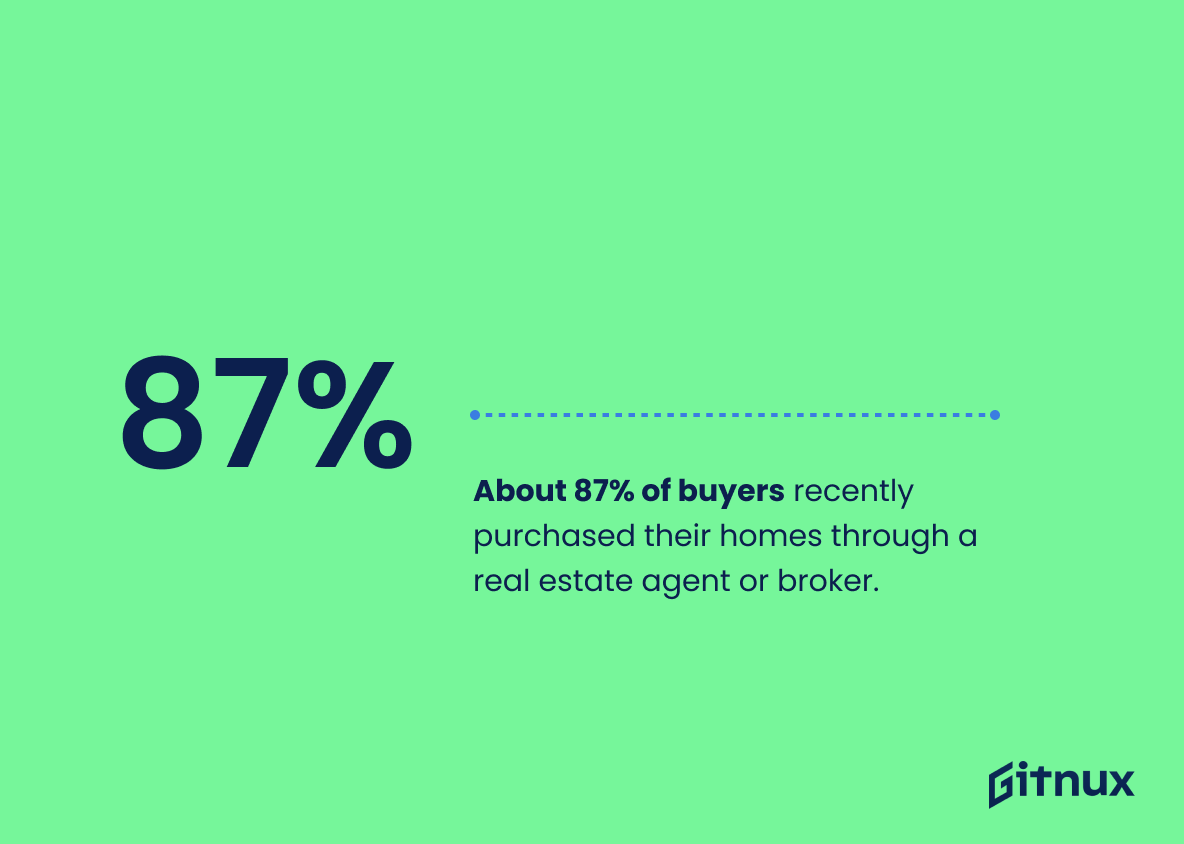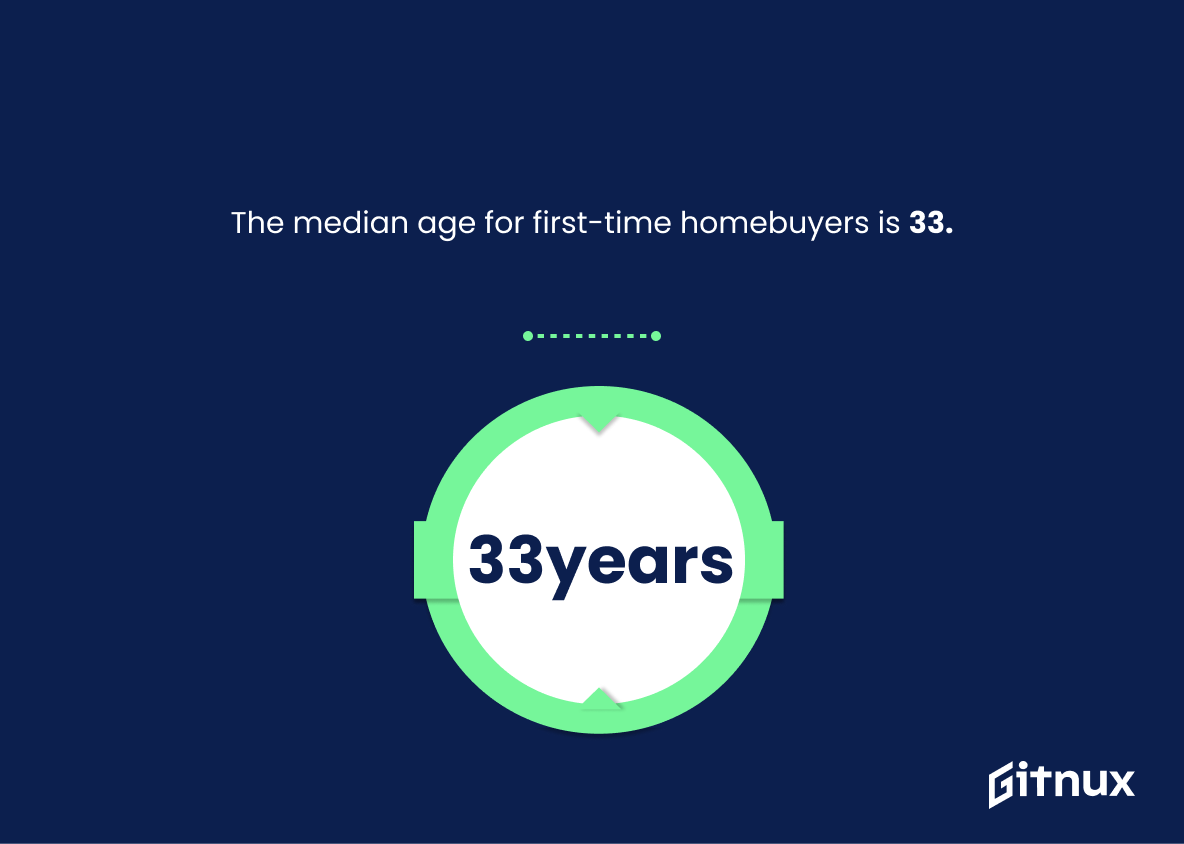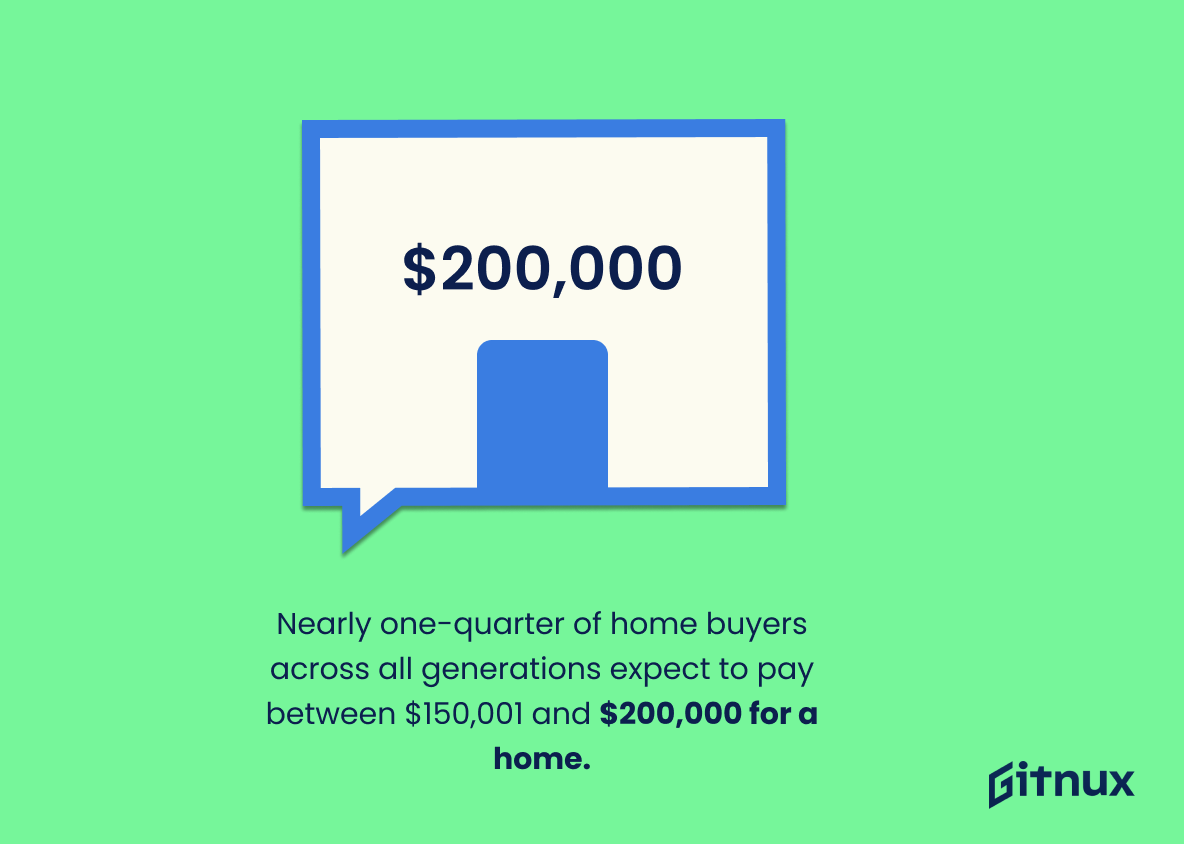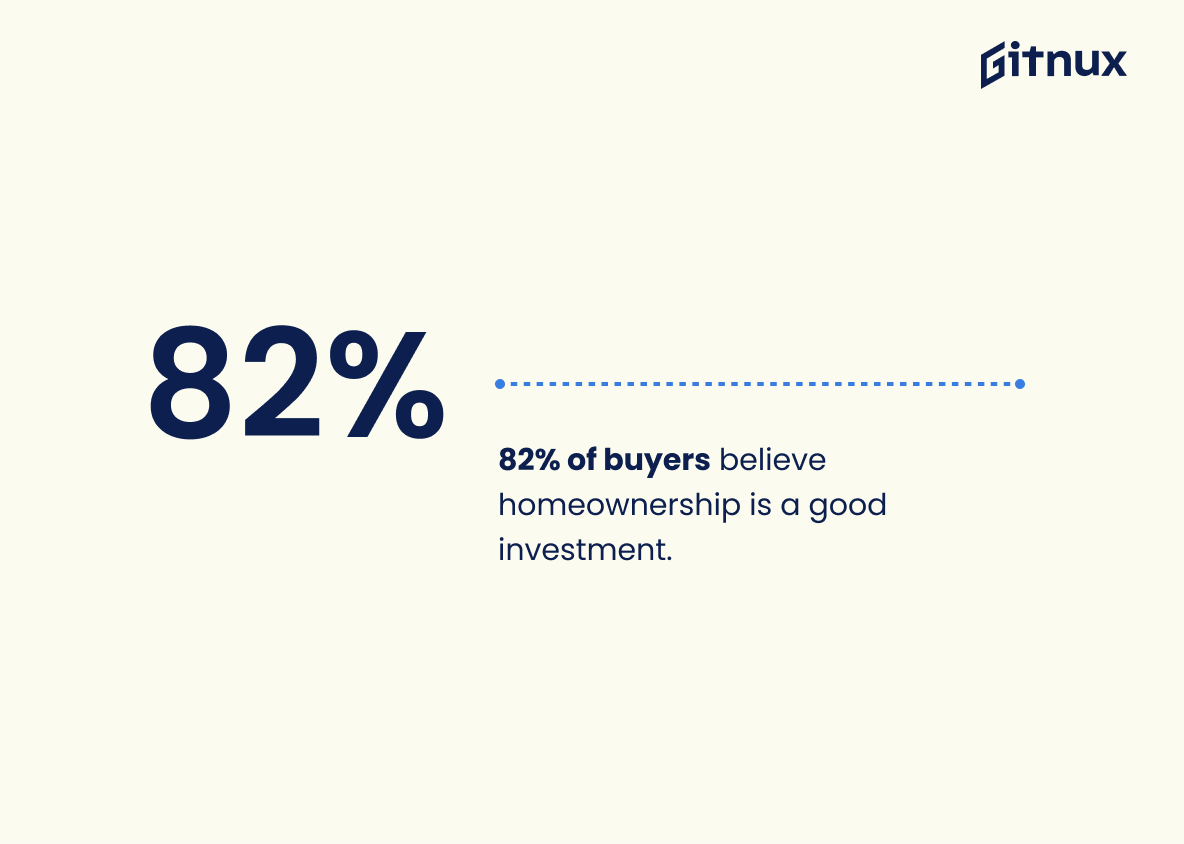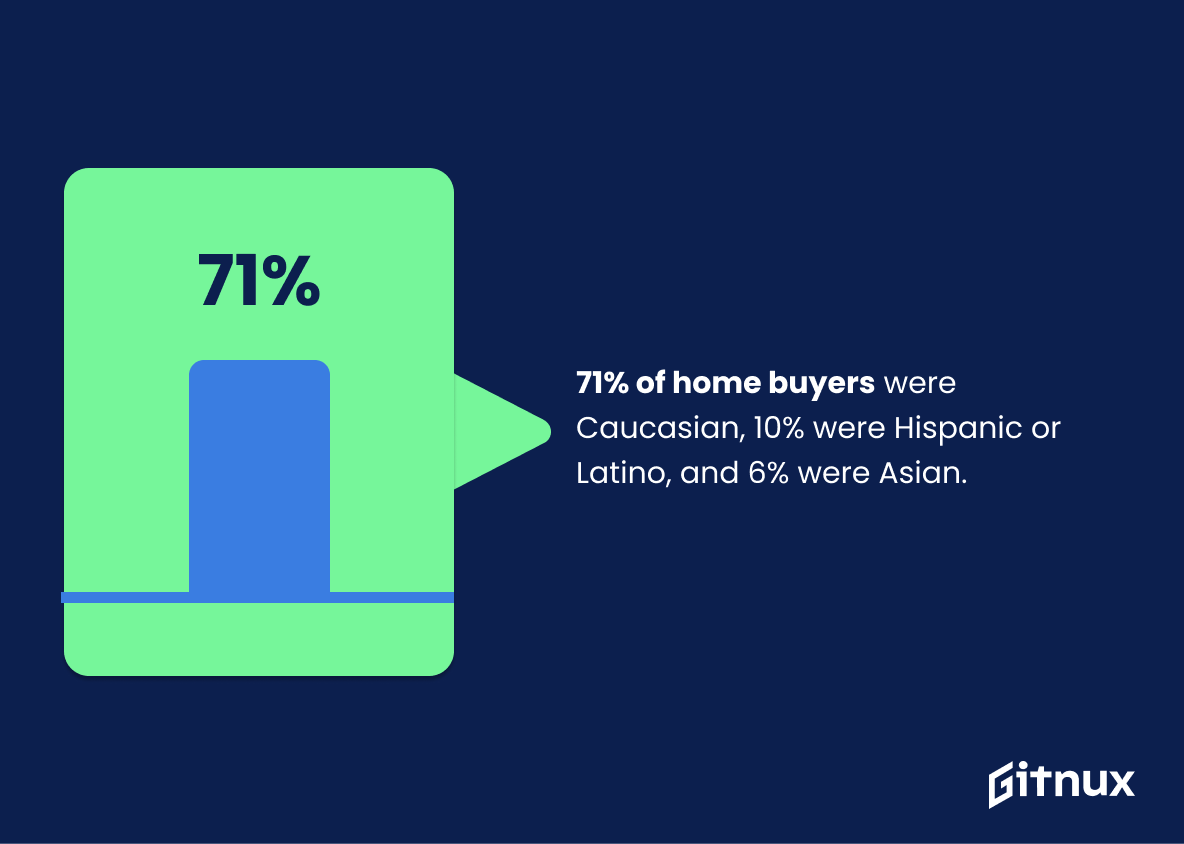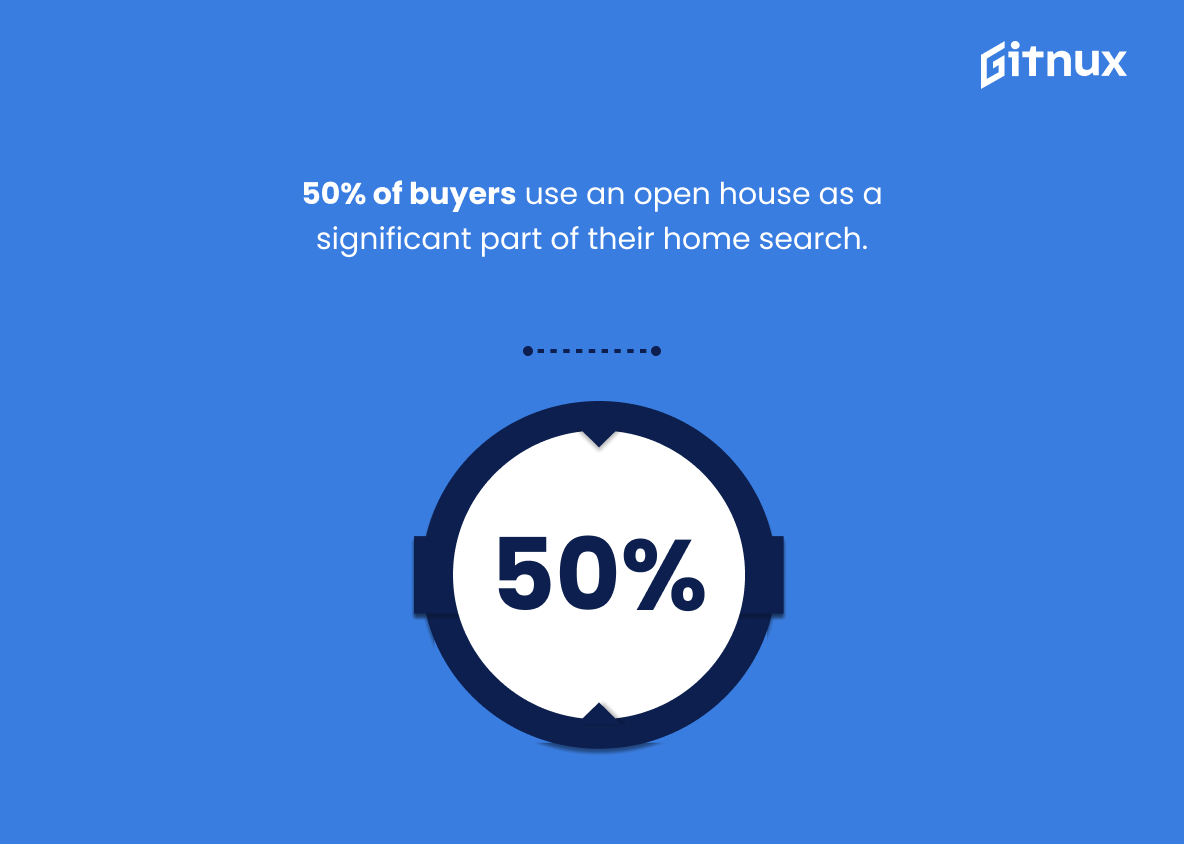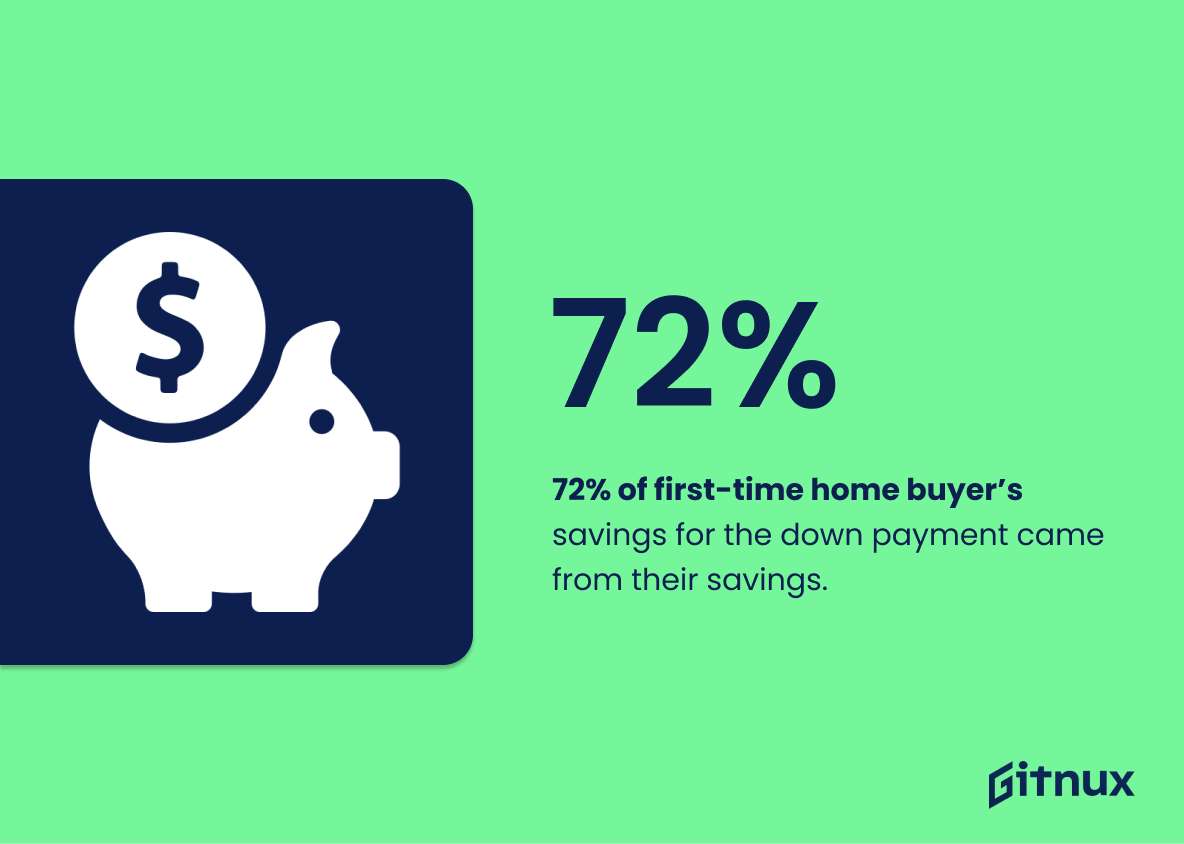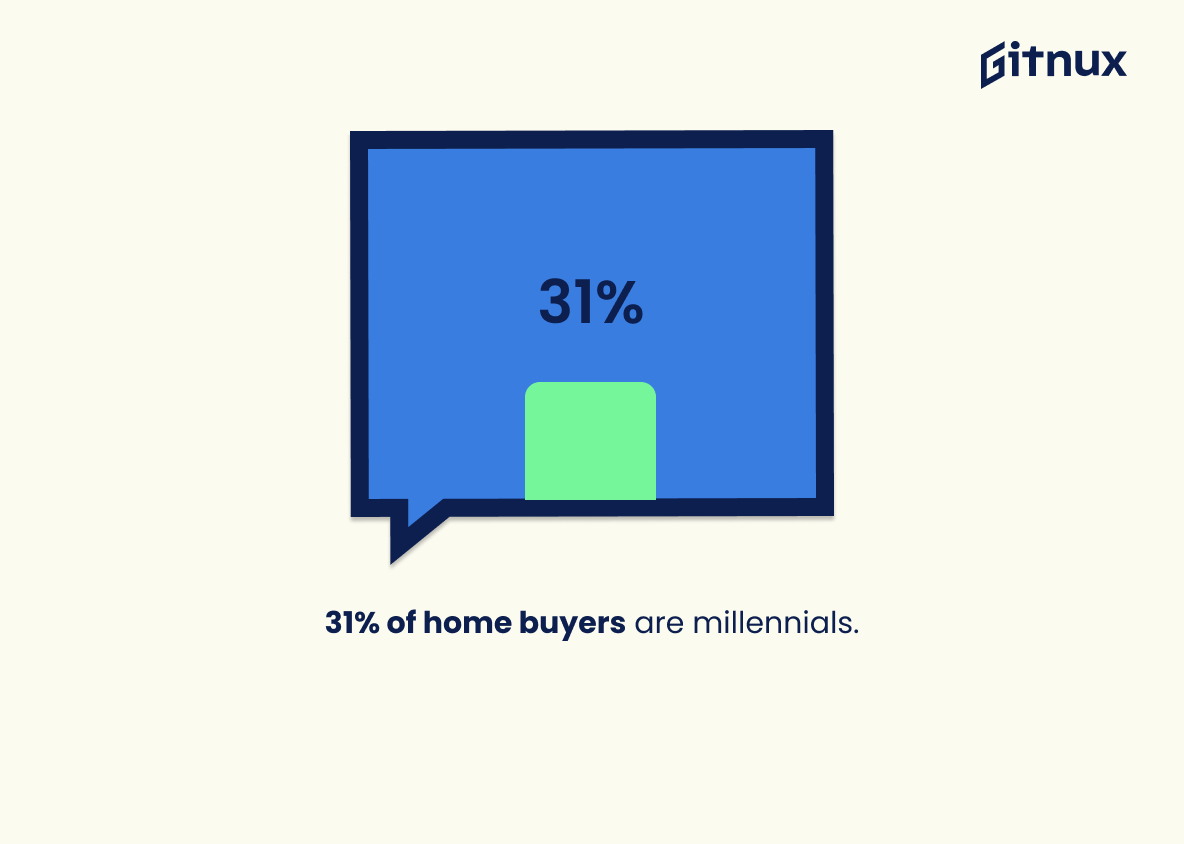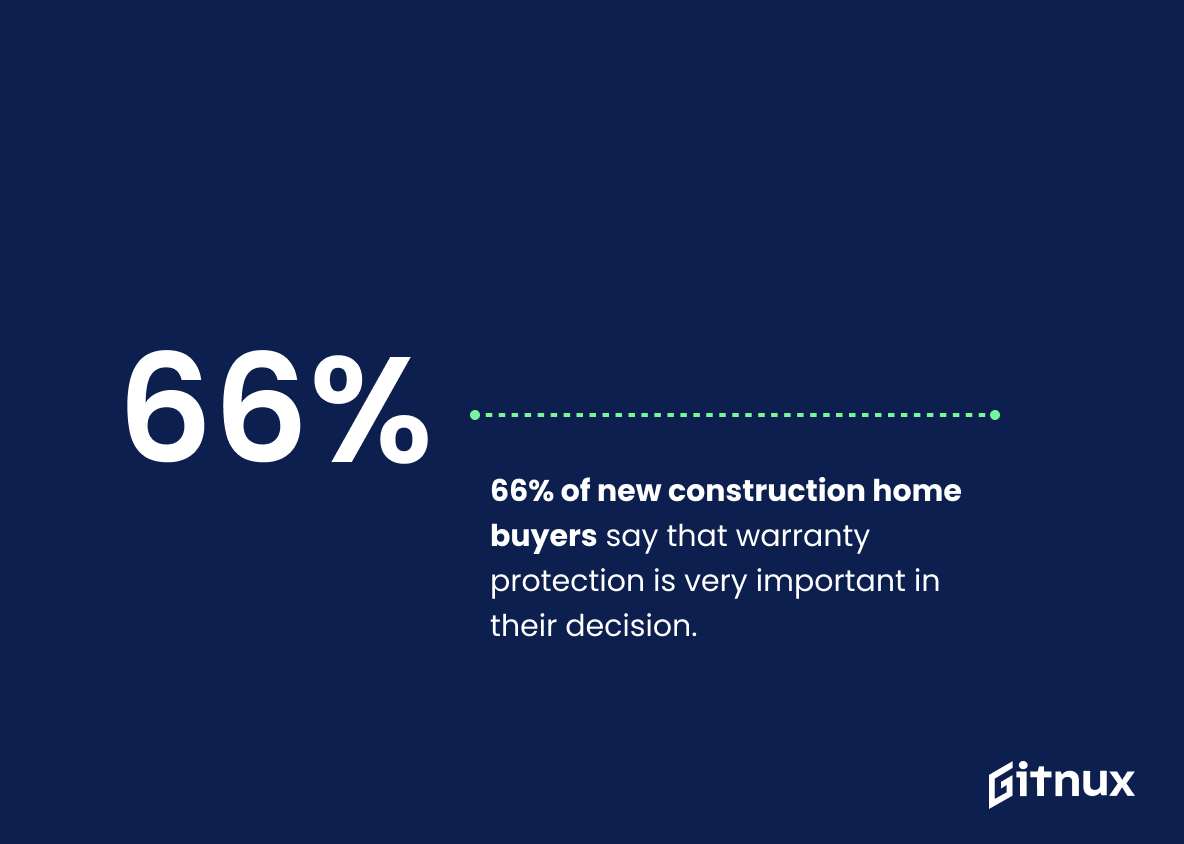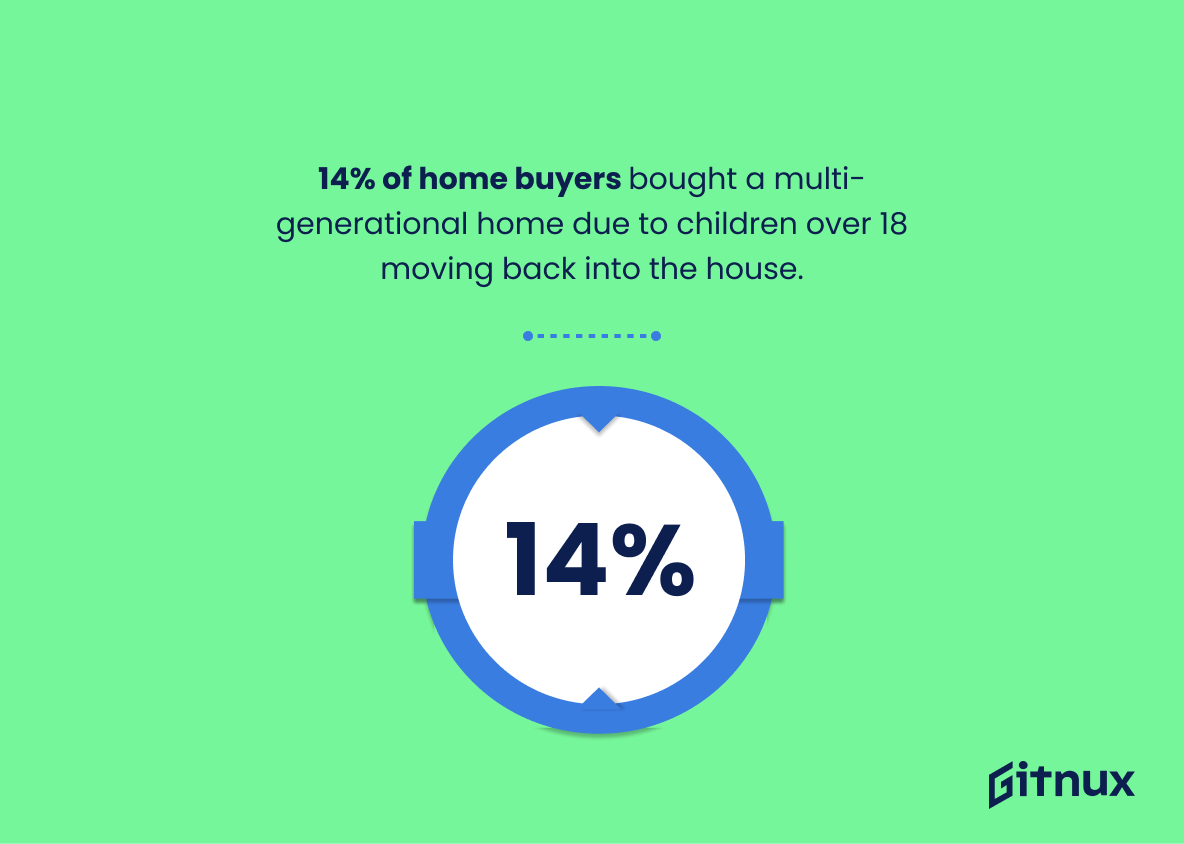Navigating the real estate market in today’s fast-paced digital age can sometimes feel like trying to decipher a complex algorithm. Enter the fascinating world of home buyer statistics. These numerical insights go beyond just numbers; they paint a colorful picture about who is buying homes, what they are looking for, their motivations, and behavioral trends. Whether you’re a prospective homebuyer, a real estate professional, or simply a curious observer, understanding these statistics can provide a valuable perspective on the evolving housing market and its future direction. So buckle up as we dive into this comprehensive exploration of home buyer statistics, shedding light on patterns that could redefine your real estate decisions and investments.
The Latest Home Buyer Statistics Unveiled
33% of home buyers are first-time buyers.
Unveiling the veil of the home buying market, an intriguing revelation surfaces — a significant chunk, precisely a third, of home buyers are navigating these waters for the very first time. This pulsating piece of data offers profound perspectives, beneficial for a variety of audiences.
Home builder companies and real estate agencies, for instance, could utilize this insight to strategically tailor marketing strategies, targeting this substantial cohort of novice buyers. The demand and preferences of these greener homeowners may starkly contrast with experienced buyers, and understanding this could be paramount to effectively capture this market segment.
Similarly, aspiring homeowners embarking on their maiden property shopping expedition could relate and find solace in this information. Realizing that they are not isolated in their journey, but actually part of an extensive community of first-time buyers, the complexities and challenges of home-buying might seem a tad bit less daunting.
Finally, policy makers might consider this statistic to devise schemes and regulations that protect and favor these first-time homebuyers who may be susceptible to predatory practices in the industry, given their lack of experience.
As a window into the composition of the home buying market, this statistic holds the power to influence decisions, formulate strategies, and provide an understanding of one’s position in the home buying journey.
The typical home purchaser searches for ten weeks before buying.
Highlighting the duration of the typical home-buying search period can provide prospective homeowners an invaluable sense of perspective. Ten weeks may seem like a long time, but in the realm of significant life investments, it’s quite reasonable. This fact underscores the importance of patience and diligent scrutiny during the home purchasing endeavor – it’s not a race, but a marathon plotted with careful discernment. After all, it’s about securing a place you’ll call home, potentially for years to come. It’s also a point of interest for real estate professionals, who can use this timeframe as a benchmark for assisting and advising their clients.
About 87% of buyers recently purchased their homes through a real estate agent or broker.
Delving into the world of home buying, the pulse-racing fact that about 87% of recent purchasers secured their homes through a real estate agent or broker offers invaluable insights. A blog post on home buyer statistics could really benefit from this number, often overlooked but of immense importance.
In essence, this figure is like holding up a mirror to the widespread reliance on real estate professionals in the twist and turns of house purchasing. The dominance of this method, represented by the statistic, could be a testament to their expertise in bridging the gap between the perfect house and eager buyers.
In the broader landscape, this number is a compass directing us towards a profound understanding of the home buying terrain- a clear signpost that buying a house is not a game of solitaire. Instead, it’s often a team sport with a seasoned professional at the helm.
It’s a sound siren for the importance of these skilled professionals in the home buying process, and a vibrant justification as to why this percentage ought to appear in a blog on home buyer statistics. From newbie to savvy buyers, this statistic helps shape the story of how homes are bought in the current market, making it a worthy contender for inclusion.
Moreover, this statistic tends to add an enticing dimension to the blog, embodying a predictive power. It can help prospective homebuyers to map their pathway in what can be a labyrinth-like home buying journey, empowering them to structure their game plan accordingly. The reliance on real estate agents or brokers could act as a strategy blueprint for potential buyers, adequately highlighting their pivotal role in successful home acquisition.
83% of all buyers of newly built homes are under the age of 65.
Peeling back the layers of this compelling statistic reveals a vibrant narrative about the current landscape of new home ownership. Having a whopping 83% of all new home buyers under 65 years showcases the active involvement of this demographic in the housing market, with perhaps a pivoting focus towards investing in real estate or harnessing the benefits of brand-new facilities. This paints a vivid picture in the grand tapestry of home buyer statistics, contextualizing trends and laying groundwork for further analysis and market predictions.
The median age for first-time homebuyers is 33.
Painting a picture of the current homebuying landscape, the statistic revealing 33 as the median age for first-time homebuyers serves as a central pillar. This numeric revelation acts as a compass to navigate the rich contours of the market, giving brokers, economists, and prospective buyers an invaluable look at the demographic they are either competing or collaborating with. With this number in mind, marketing strategies can be sharpened, policies adjusted, and personal decisions wisely made. This cardinal statistic pulsates with insights; not as a solitary number, but as a key to comprehend larger economic and societal patterns, providing perspectives that could reshape home buying narratives.
About 34% of recent homebuyers were unmarried.
Unveiling the curtain off the home buying landscape, the statistic revealing that about 34% of recent homebuyers were unmarried provides intriguing insight. It paints a portrait of a dynamic shift in the traditionally held belief that home ownership is predominantly the domain of married couples. This emerging trend strengthens the narrative that societal norms are evolving and that single individuals are demonstrating financial independence in the property market. In the panorama of Home Buyer Statistics, it gives a voice to this significant set of buyers who are carving their own path towards homeownership. A blog post delving into these patterns could illuminate the changing demographic of homebuyers, while helping realtors, investors, and even policy-makers understand and adapt to these transformational shifts in the market. It could also serve as a beacon, encouraging and reassuring unmarried individuals considering their own leap into real estate. Notably, it supports the truth that homebuying is not a privilege reserved for the wedded, but an attainable goal for the unwedded too.
Nearly one-quarter of home buyers across all generations expect to pay between $150,001 and $200,000 for a home.
In the realm of home buyer statistics, enlightening ourselves about the price range that prospective homeowners are willing to pay can mold our understanding, add layers to our market intel and catapult us into higher permutations of strategic decisions. The figure asserting that almost a quarter of home buyers – transcending generational divides – aim to spend between $150,001 and $200,000 for a property, anchors itself as a cornerstone in this fascinating world. This tells us emphatically that this is the sweet spot of the market, the price range that shows promise, viability and potential for both buyers and sellers. It underpins the importance of observing affordability scales while making housing policies, pricing properties, and devising marketing strategies, therefore cradling the assumption of where the majority of the market transactions lie.
82% of buyers believe homeownership is a good investment.
Nestled within the heart of this intriguing revelation that ‘82% of buyers believe homeownership is a good investment,’ blossoms a narrative of optimism and confidence in the real estate market. As the main thread in a tapestry woven with home buyer statistics, it communicates a profound faith in the value of bricks and mortar, the belief in the promise of a lucrative return on investment. This echoes an enticing siren call for investors and real estate enthusiasts, ringing across the landscape of housing market analyses. It hints at a broad consensus – a shared belief in the longevity and stability of real estate ventures, thus playing a key role within the larger narrative of home buyer stats.
71% of home buyers were Caucasian, 10% were Hispanic or Latino, and 6% were Asian.
Undeniably, the ethnic complexion of home buyers forms an integral part of any conversation around Home Buyer Statistics. The cited percentages act as a window into the diverse landscape of home ownership. For instance, 71% being Caucasian buyers paints a picture of their significant footprint in the market. Meanwhile, a comparison with the 10% Hispanics or Latinos and 6% Asians affords us insights into the imbalance and prospective growth arenas within this sector. These figures, therefore, orchestrate an informed debate on the dynamics of home ownership across different ethnic populations, serving as a crucial insight for potential investors, policy makers, and industry stakeholders.
50% of buyers use an open house as a significant part of their home search.
In the pulsating heart of home buying adventures, open houses pump vital energy. This very fact is underscored by the compelling statistic stating ‘50% of buyers use an open house as a significant part of their home search.’ Placed in the light of a blog post centered around Home Buyer Statistics, this nugget of data tells a story of habits and trends, of savvy shopping and informed decision making.
It paints a picture of the modern buyer, one who fuses the convenience of digital exploration with the sensory experience of a tactile home tour. This statistic becomes a barometer for real estate agents, signifying the enduring relevance of open houses in their marketing strategies. It tiptoes into the psychological domain, highlighting the human desire to connect emotionally and make informed decisions based on a balance of insights and instinct.
Furthermore, this statistically-backed revelation equips both buyers and sellers with a much-needed compass to navigate the unpredictable terrains of the real estate market. Buyers can harness this knowledge to sharpen their purchase strategies, while sellers and agents can deploy it to tailor their marketing plans effectively, knowing that an open house is still a valuable tool that stirs buyer interest and drives sales. Hence, it becomes clear that this statistic does not simply live in the realm of bland data—it thrives at the intersection of strategy, habit, psychology, and market dynamics.
72% of first-time home buyer’s savings for the down payment came from their savings.
The vibrant thread that weaves through the tapestry of Home Buyer Statistics is the revealing detail that 72% of first-time home buyers dip into their savings for the down payment. This captivating insight not only shines a spotlight on personal finance habits but also underscores the vital role of savings in acquiring a property, especially for those entering the homeownership territory for the first time. This reiterates the importance of making frugal decisions and cultivating saving habits early on, thereby heralding a critical narrative for potential homeowners when crafting their fiscal strategies.
31% of home buyers are millennials.
Highlighting that nearly one-third of home buyers belong to the millennial generation definitely underscores a significant shift in the housing market. Focusing on this fact in a blog post about Home Buyer Statistics would surely captivate the readers as it sheds light on the emerging influence of these young adults in real estate. Given the unique buying patterns and preferences of millennials, such as prioritizing location and lifestyle compatibility in housing choices, this insight could dramatically influence and shape future trends in the housing industry. It also gives potential sellers a clear perspective on what to put on their priority list when they’re considering selling their property. This figure serves as a compelling compass for housing market stakeholders, pointing towards the future direction of the market.
66% of new construction home buyers say that warranty protection is very important in their decision.
The essence of this particular statistic lies in the revelation of the profound emphasis home buyers place on warranty protection. It provides an illumination into the psyche of 66% of new construction home buyers, guiding prospective sellers, real estate agents, and marketers to the understanding that warranty offerings must not be treated as an afterthought, but rather, as a vital part of the sales package. In the vast landscape of home buyer preferences profiled in this blog, this statistic stands as a beacon, signaling that warranty protection is a key frontier in influencing purchasing decisions. It supplies a crucial angle for drafting sales strategies, reshaping marketing techniques, and tailoring offerings to meet the needs and expectations of real estate consumers in the new construction market.
In 2020, 31% of all home buyers financed 100% of their home purchase.
Peeling back the curtain on 2020’s home buying narrative, you encounter an intriguing subplot. A substantial figure—31% to be exact—of all home buyers opted to finance the entirety of their home purchase. Devising their home buying journey differently, these individuals transformed traditionally accepted norms by bypassing down payments and embracing full financing. Sculpting their narratives within the larger context of the home buying demographic, their participation suggests a shift in traditional purchasing approaches. The subplot of their actions offers a fresh perspective in a blog post about Home Buyer Statistics, illuminating a growing trend and lending a new vibrancy to the broader picture.
14% of home buyers bought a multi-generational home due to children over 18 moving back into the house.
In the realm of Home Buyer Statistics, the information that 14% of purchasers opted for a multi-generational home due to children older than 18 returning to nest, serves as a compass, navigating us towards understanding changing household dynamics. It signals the emerging trend of adult children returning home and the consequent adjustments buyers are making in their home selection. Thus, housing market patterns are gradually shifting and being profoundly influenced by this trend. This metric also casts light on the growing importance and preference for homes that can comfortably accommodate multiple generations under one roof, a variable real estate investors and developers can ill afford to ignore.
Conclusion
The constantly evolving landscape of real estate demands an in-depth understanding of home buyer statistics. Such insights can massively influence your approach and decisions whether you’re a homebuyer, seller, or a real estate professional. Armed with the statistics and trends we’ve explored, you’re better positioned to navigate the property market and leverage the opportunities that lie within. Stay updated, informed and proactive. The real estate market waits for no one, and arming yourself with accurate, comprehensive data is the key to success. So, as the number of new home buyers continues to rise, hopefully, the statistics we’ve discussed will help you make savvy, informed decisions.
References
0. – https://www.www.2-10.com
1. – https://www.www.elliemae.com
2. – https://www.www.homes.com
3. – https://www.www.nar.realtor
4. – https://www.www.usnews.com
5. – https://www.www.houselogic.com
6. – https://www.www.nahb.org
7. – https://www.www.zillow.com
